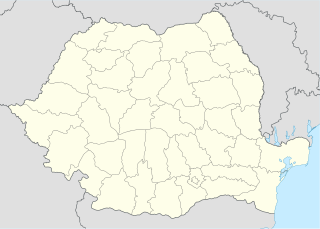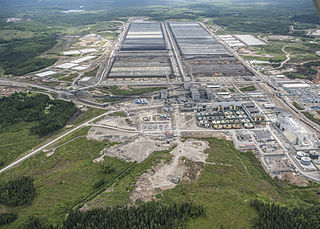
Codelco is a Chilean state owned copper mining company. It was formed in 1976 from foreign-owned copper companies that were nationalised in 1971.
KGHM Polska Miedź S.A., commonly known as KGHM, is a Polish multinational corporation that employs near 34,000 people around the world and has been a leader in copper and silver production for more than 50 years. In 1991, the company was established as a state enterprise and since 1997, their shares have been traded on the Warsaw Stock Exchange. Currently, KGHM operates 9 open-pit and underground mines located in Poland, Canada, the USA and Chile and is actively advancing 4 projects. KGHM produces key global resources including copper, copper sulphate, gold, silver, nickel, nickel sulphate, molybdenum, rhenium, lead, sulphuric acid, selenium and platinum group metals.

Mining in Iran is underdeveloped, yet the country is one of the most important mineral producers in the world, ranked among 15 major mineral-rich countries, holding some 68 types of minerals, 37 billion tonnes of proven reserves and more than 57 billion tonnes of potential reserves worth $770 billion in 2014. Mineral production contributes only 0.6 per cent to the country's GDP. Add other mining-related industries and this figure increases to just four per cent (2005). Many factors have contributed to this, namely lack of suitable infrastructure, legal barriers, exploration difficulties, and government control over all resources.

Mining in the United Kingdom produces a wide variety of fossil fuels, metals, and industrial minerals due to its complex geology. In 2013, there were over 2,000 active mines, quarries, and offshore drilling sites on the continental land mass of the United Kingdom producing £34bn of minerals and employing 36,000 people.
The Iacobeni mine is a large mine in the north of Romania in Suceava County, 96 km southwest of Suceava and 340 km north of the capital, Bucharest. Iacobeni represents the third largest copper reserve in Romania having estimated reserves of 200 million tonnes of ore grading 0.4% copper. The mine also has one of the largest manganese reserves in Romania estimated at 2.5 million tonnes of ore with an annual production of around 70,000 tonnes.
The Cavnic mine is a large mine located in the northwest of Romania in Maramureş County, 26 km southwest of Baia Mare and 576 km north of the capital, Bucharest. Cavnic represents one of the largest polymetallic reserves in Romania having significant reserves of gold, silver, copper, lead and zinc amounting to 20 million tonnes of ore grading 1g/t gold, 30g/t silver, 2% lead, 3% zinc and 1% copper. The resources amount to 640,000 oz of gold, 19.2 million oz of silver, 400,000 tonnes of lead metal, 600,000 tonnes of zinc metal and 200,000 tonnes of copper metal.
The Muncelu Mic mine was a large open pit mine in the western of Romania in Hunedoara County, 16 km southeast of Simeria and 387 km north-west of the capital, Bucharest. Muncelu Mic represents one of the largest iron ore reserves in Romania having estimated reserves of 6.5 million tonnes of ore. When it was operational it produced around 200,000 tonnes of iron ore/year. The mine also has a gold and silver reserves of around 5.4 million tonnes grading 1g/t gold and 8g/t silver resulting 173,000 oz of gold and 1.38 million oz of silver.

The Rovina mine is a large open pit mine in the west of Romania in Hunedoara County, 18 km north of Deva and 388 km north of the capital, Bucharest. Rovina represents a large gold and copper deposit with estimated reserves of 4 million oz of gold and 244,000 tonnes of copper. The project is owned by the Toronto-based company Carpathian Gold.

The Cireșata mine is a large open pit mine in the west of Romania in Hunedoara County, 30 km north of Deva and 400 km north of the capital, Bucharest. Cireșata represents a large gold and copper deposit with estimated reserves of 4.18 million oz of gold and 174.4 million tonnes of copper ore grading 0.15% copper. The project is owned by the Toronto-based company Carpathian Gold.
The Polkowice-Sieroszowice mine is a large mine in the west of Poland near Polkowice and Sieroszowice, Polkowice County, 350 km south-west of the capital, Warsaw. Polkowice-Sieroszowice represents one of the largest copper and silver reserve in Poland having estimated reserves of 387 million tonnes of ore grading 2.65% copper and 54 g/tonnes silver. The annual ore production is around 11 million tonnes from which 292,000 tonnes of copper and 594 tonnes of silver are extracted.
The Rudna mine is a large mine in the west of Poland in Polkowice, Polkowice County, 350 kilometres south-west of the capital, Warsaw. Rudna represents one of the largest copper and silver reserve in Poland having estimated reserves of 513 million tonnes of ore grading 1.78% copper and 42 g/tonnes silver. The annual ore production is around 13 million tonnes from which 231,000 tonnes of copper and 546 tonnes of silver are extracted.
The Głogów Głęboki-Przemysłowy mine is a large mine in the west of Poland in Polkowice, Polkowice County, 350 km south-west of the capital, Warsaw. Głogów Głęboki-Przemysłowy represents one of the largest copper and silver reserve in Poland having estimated reserves of 292 million tonnes of ore grading 2.4% copper and 79 g/tonnes silver. The annual ore production is around 6 million tonnes from which 144,000 tonnes of copper and 474 tonnes of silver are extracted.
The Bytom Odrzański mine is a large mine in the west of Poland in Bytom Odrzański, Nowa Sól County, 360 km south-west of the capital, Warsaw. Bytom Odrzański represents one of the largest copper and silver reserve in Poland having estimated reserves of 31.5 million tonnes of ore grading 2.47% copper and 56 g/tonnes silver. The annual ore production is around 0.7 million tonnes from which 17,300 tonnes of copper and 39.2 tonnes of silver are extracted.
The Retków mine is a large mine in the west of Poland in Retków, Polkowice County, 350 km south-west of the capital, Warsaw. Retków represents one of the largest copper and silver reserve in Poland having estimated reserves of 135.8 million tonnes of ore grading 1.77% copper and 86 g/tonnes silver. The annual ore production is around 2 million tonnes from which 35,400 tonnes of copper and 172 tonnes of silver are extracted.
The Gaworzyce mine is a large mine in the west of Poland in Gaworzyce, Polkowice County, 370 km south-west of the capital, Warsaw. Gaworzyce represents one of the largest copper and silver reserve in Poland having estimated reserves of 44.8 million tonnes of ore grading 3.05% copper and 44 g/tonnes silver. The annual ore production is around 1 million tonnes from which 30,500 tonnes of copper and 44 tonnes of silver are extracted.
The Myszków mine is a large mine in the centre of Poland in Myszków, Myszków County, 258 km south-west of the capital, Warsaw. Myszków represents one of the largest copper and silver reserve in Poland having estimated reserves of 1,334 million tonnes of ore grading 0.15% copper and 2.37 g/tonnes silver. The 1.334 billion tonnes of ore contains 2 million tonnes of copper metal and around 3,200 tonnes of silver but the deposit also grades 0.07% molybdenum that contains 934,000 tonnes of molybdenum metal and 0.05% tungsten that contains 667,000 tonnes of tungsten metal.

The Talvivaara mine is one of the largest nickel mines in Finland. The mine is located in Sotkamo in Kainuu region of Finland. The mine is owned by government-established Terrafame, which bought it from the bankruptcy-bound Talvivaara Mining Company in 2015. Its annual production capacity is over 10 million tonnes of ore. The mine has reserves amounting to 1 billion tonnes of ore grading 0.22% nickel, 0.13% copper, 0.5% zinc and 0.02% cobalt thus resulting 2.2 million tonnes of nickel, 1.3 million tonnes of copper, 5 million tonnes of zinc and 0.2 million tonnes of cobalt.
Mining in North Korea is important to the country's economy. North Korea is naturally abundant in metals such as magnesite, zinc, tungsten, and iron; with magnesite resources of 6 billion tonnes, particularly in the Hamgyeong-do and Jagang-do provinces. However, often these cannot be mined due to the acute shortage of electricity in the country, as well as the lack of proper tools to mine these materials and an antiquated industrial base. Coal, iron ore, limestone, and magnesite deposits are larger than other mineral commodities. Mining joint ventures with other countries include China, Canada, Egypt, and South Korea.

Escondida is a copper mine in the Atacama Desert in Antofagasta Region, Chile. The Escondida deposit is one of a cluster of porphyry coppers in an elongated area about 18 km north-south and 3 km east-west and is associated with the 600 km long West Fissure system, which is in turn associated with most of the major Chilean porphyry deposits. A barren, leached cap, in places up to 300 metres thick, overlies a thick zone of high grade secondary supergene mineralisation of the main orebody, largely chalcocite and covellite, which in turn overlies the unaltered primary mineralisation of chalcopyrite, bornite and pyrite.
The Phu Kham mine is a large copper mine located in the south of Laos in Savannakhet Province. Phu Kham represents one of the largest copper reserve in Laos and in the world having estimated reserves of 450 million tonnes of ore grading 0.54% copper, 3.46 million oz of gold and 30.2 million oz of silver.









